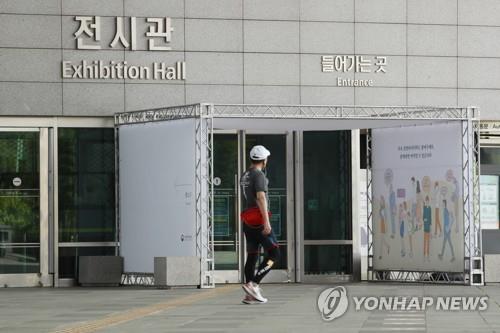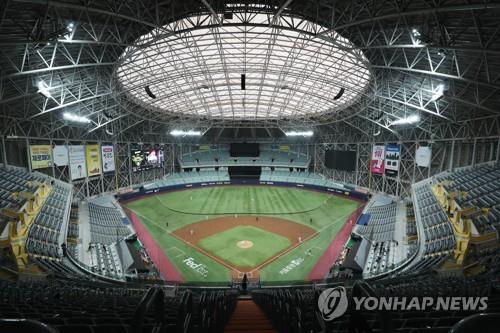- California Assembly OKs highest minimum wage in nation
- S. Korea unveils first graphic cigarette warnings
- US joins with South Korea, Japan in bid to deter North Korea
- LPGA golfer Chun In-gee finally back in action
- S. Korea won’t be top seed in final World Cup qualification round
- US men’s soccer misses 2nd straight Olympics
- US back on track in qualifying with 4-0 win over Guatemala
- High-intensity workout injuries spawn cottage industry
- CDC expands range of Zika mosquitoes into parts of Northeast
- Who knew? ‘The Walking Dead’ is helping families connect
S. Korea reports no new local virus cases, set to further ease social distancing
South Korea reported eight more cases of the new coronavirus Monday, but all of them came from overseas, as the country is set to further ease its monthslong social distancing guidelines, including reopening schools.
The newly added COVID-19 cases brought the nation’s total infections to 10,801, according to the Korea Centers for Disease Control and Prevention (KCDC).
The latest tally marks the third day that the country has reported no locally transmitted virus infections, the KCDC said.
On April 30, the country reported no additional local virus cases for the first time in 72 days. On Saturday, there were also no domestic virus cases.


A person walks in front of the National Museum of Korea on May 4, 2020, as state-run museums and libraries prepare to reopen starting this week. (Yonhap)
The slowdown in new infections prompted the country to end its 45-day social distancing campaign and shift toward a so-called everyday life quarantine scheme from Wednesday.
The country believes it has virtually contained the COVID-19 outbreak here, though imported cases remain a threat.
“The COVID-19 pandemic will not end in a short period of time, and it is expected to prolong globally,” said KCDC Director-General Jeong Eun-kyeong, urging people to abide by government-recommended guidelines.
The country’s total number of imported cases reached 1,099, the KCDC said. More than 90 percent of the imported cases are South Korean nationals.
Earlier, the government said it would soon announce dates for students to return to school in line with the country’s relaxed social distancing guidelines.
Jeong said there is still a possibility of cluster infections occurring at schools, but it is highly unlikely.
The government said it will review the reopening of kindergartens more carefully, citing that small children are more vulnerable to COVID-19.
“We should approach the issue of opening kindergartens more conservatively,” Vice Health Minister Kim Ganglip told reporters earlier.
The nation’s death toll increased by two to 252, the KCDC said.
In total, 9,217 people in South Korea have recovered from the virus, up 34 from a day earlier. So far, 85 percent of the patients have been cured. The overall fatality rate reached 2.33 percent.
The country, with a population of around 50 million, has tested 633,921 people since Jan 3, including 2,948 tests carried out a day earlier.
Daegu, the nation’s worst virus-hit region located 300 kilometers southeast of Seoul, added no cases. The city accounts for 64 percent of the nation’s total COVID-19 cases.
However, the KCDC said new COVID-19 cases whose infection routes have not been identified were clustered in Daegu.
“It is concerning that seven of the 10 patients in the past two weeks whose infection routes have not been identified were from Daegu,” Kim said.
Kim further said the number indicates that it is still possible that there could be a group of patients who have not yet been detected by health authorities, indicating that there are still sources of infections in communities.
Health authorities said they are remaining vigilant over the holiday that runs through Tuesday, as many citizens are traveling across the country amid overseas travel restrictions.
Kim also asked citizens to follow social distancing and other quarantine measures on Children’s Day that falls on Tuesday.
They have repeatedly warned of a potential second wave of infections, saying that eased social distancing could lead to an increase in new cases.
“Clinics solely responsible for respiratory disease will be opened so that we can systemically detect and treat patients from the early stage,” Kim said.











